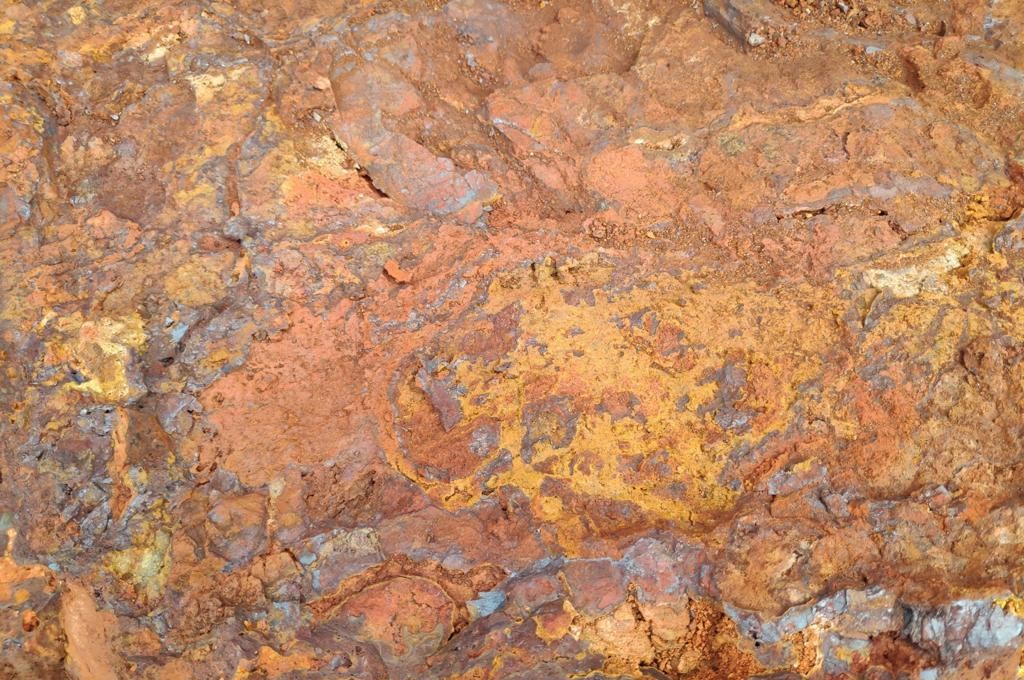Introduction
Iron ore, a vital natural resource, is the backbone of numerous industries worldwide. The iron content within these ores can vary significantly, impacting their value and utility. In this blog, we will delve into the fascinating world of iron ores, exploring the highest iron content varieties and their significance in various applications.
Hematite Ore: The Iron King
Hematite ore, often called the “Iron King,” is renowned for its high iron content. It typically contains around 60-70% iron by weight. This ore is widely distributed and mined across the globe, making it a vital source for iron production. Its fine-grained nature and brilliant metallic luster make it highly sought-after.
Hematite’s high iron content and purity make it a favorite in steel production, manufacturing and as a natural pigment in cosmetics and paints.
- Chemical Formula: Fe₂O₃ (Iron(III) oxide)
- Atomic Weights:
- Iron (Fe): ~55.85 g/mol
- Oxygen (O): ~16.00 g/mol
- Calculation: The molar mass of Fe₂O₃ is approximately 2 * 55.85 g/mol (for Fe) + 3 * 16.00 g/mol (for O) = 159.70 g/mol.
- Highest Iron Content:
- (2 * 55.85 g/mol) / 159.70 g/mol ≈ 0.699 or 69.9%
Hematite ore can have a theoretical iron content of a maximum 69.9%.
Magnetite Ore: The Magnetic Marvel
Magnetite ore is another iron ore variety celebrated for its exceptionally high iron content, ranging from 60% to a staggering 72%. One of its defining features is its magnetic properties, allowing it to attract iron and steel. This property makes it valuable in industries where magnetism plays a role.
Magnetite is extensively used in the production of high-quality iron and steel, as well as in specialized applications like magnetic recording materials and heavy concrete aggregates.
- Chemical Formula: Fe₃O₄ (Iron(II,III) oxide)
- Atomic Weights:
- Iron (Fe): ~55.85 g/mol
- Oxygen (O): ~16.00 g/mol
- Calculation: The molar mass of Fe₃O₄ is approximately 3 * 55.85 g/mol (for Fe) + 4 * 16.00 g/mol (for O) = 231.40 g/mol.
- Highest Iron Content:
- (3 * 55.85 g/mol) / 231.40 g/mol ≈ 0.723 or 72.3%
Magnetite ore can have a theoretical iron content of a maximum 72.3%.
Limonite Ore: The Brown Gold
Limonite, often referred to as “brown iron ore,” boasts a respectable iron content of approximately 48-60%. While not as rich in iron as hematite or magnetite, limonite still finds application in various industries. Its distinctive yellow-brown color and earthy texture are characteristic features.
Limonite is employed in pigments, soil conditioners, and as a low-grade iron ore in some metallurgical processes.
- Chemical Formula: FeO(OH)·nH₂O (Hydrated iron(III) oxide hydroxide)
- Atomic Weights:
- Iron (Fe): ~55.85 g/mol
- Oxygen (O): ~16.00 g/mol
- Hydrogen (H): ~1.01 g/mol
- Calculation: The molar mass of FeO(OH)·nH₂O can vary depending on the water content (n), but it typically ranges between 88 g/mol and 103 g/mol.
- Highest Iron Content:
- For FeO(OH)·nH₂O with the lowest water content (n = 0):
- 55.85 g/mol (for Fe) / 88 g/mol ≈ 0.635 or 63.5%
- For FeO(OH)·nH₂O with the highest water content (n = 0):
- 55.85 g/mol (for Fe) / 103 g/mol ≈ 0.543 or 54.3%
- For FeO(OH)·nH₂O with the lowest water content (n = 0):
Limonite ore can have a theoretical iron content of a maximum of 54.3%.
Siderite Ore: The Secretive Source
Siderite ore, with iron content typically ranging from 48% to 51%, is less renowned but equally significant. It derives its name from the Greek word “sideros,” meaning iron, and often goes unnoticed compared to its flashier counterparts.
Siderite ore is used in the production of iron and steel, and its carbonate composition can also be utilized in the chemical industry.
- Chemical Formula: FeCO₃ (Iron(II) carbonate)
- Atomic Weights:
- Iron (Fe): ~55.85 g/mol
- Carbon (C): ~12.01 g/mol
- Oxygen (O): ~16.00 g/mol
- Calculation: The molar mass of FeCO₃ is approximately 55.85 g/mol (for Fe) + 12.01 g/mol (for C) + 3 * 16.00 g/mol (for O) = 115.86 g/mol.
- Highest Iron Content:
- (55.85 g/mol) / 115.86 g/mol ≈ 0.482 or 48.2%
Siderite ore can have a theoretical iron content of a maximum 48.2%.
Goethite Ore: The Hidden Gem
Goethite is an iron ore variety containing iron content ranging from 41% to 62%. Often overshadowed by hematite and magnetite, goethite has its unique charm. Its dark brown to yellow-brown color and earthy appearance set it apart.
Goethite is used in pigments, soil amendments, and occasionally in the manufacturing of iron and steel, cement, and ceramics.
- Chemical Formula: FeO(OH) (Iron(III) oxide-hydroxide)
- Atomic Weights:
- Iron (Fe): ~55.85 g/mol
- Oxygen (O): ~16.00 g/mol
- Hydrogen (H): ~1.01 g/mol
- Calculation: The molar mass of FeO(OH) is approximately 55.85 g/mol (for Fe) + 16.00 g/mol (for O) + 1.01 g/mol (for H) = 72.86 g/mol.
- Highest Iron Content:
- (55.85 g/mol) / 72.86 g/mol ≈ 0.766 or 76.6% (excluding OH)
Goethite ore can have a theoretical iron content of a maximum 76.6%. But due to the hydroxide, it never occurs with such a high grade.
“These calculations provide an insight into the potential iron content of these iron ores based on their chemical composition and atomic weights. Keep in mind that the actual iron content in naturally occurring ores may vary due to impurities and other factors.”
Conclusion
In the world of iron ores, the highest iron content ores are essential resources that fuel various industries. Hematite and magnetite, with their iron-rich composition, take center stage in steel production, while limonite, siderite, and goethite find their niche applications in other sectors.
Understanding the unique properties of these iron ores helps industries make informed decisions about which ore to use for specific applications, ensuring efficient and sustainable resource utilization. Whether it’s building bridges, manufacturing automobiles, or even adding a touch of color to our lives, iron ores play an integral role in shaping our world.
Let’s provide the chemical formulas of the mentioned iron ores and calculate the highest possible iron content in each of them based on their chemical composition and atomic weights.
Signing Off.
You may love reading this as well:
Exploring the Origins of Iron Ore: Unraveling Earth’s Hidden Treasure
Exploring the Origins of Iron Ore: Unraveling Earth’s Hidden Treasure
External Links:

